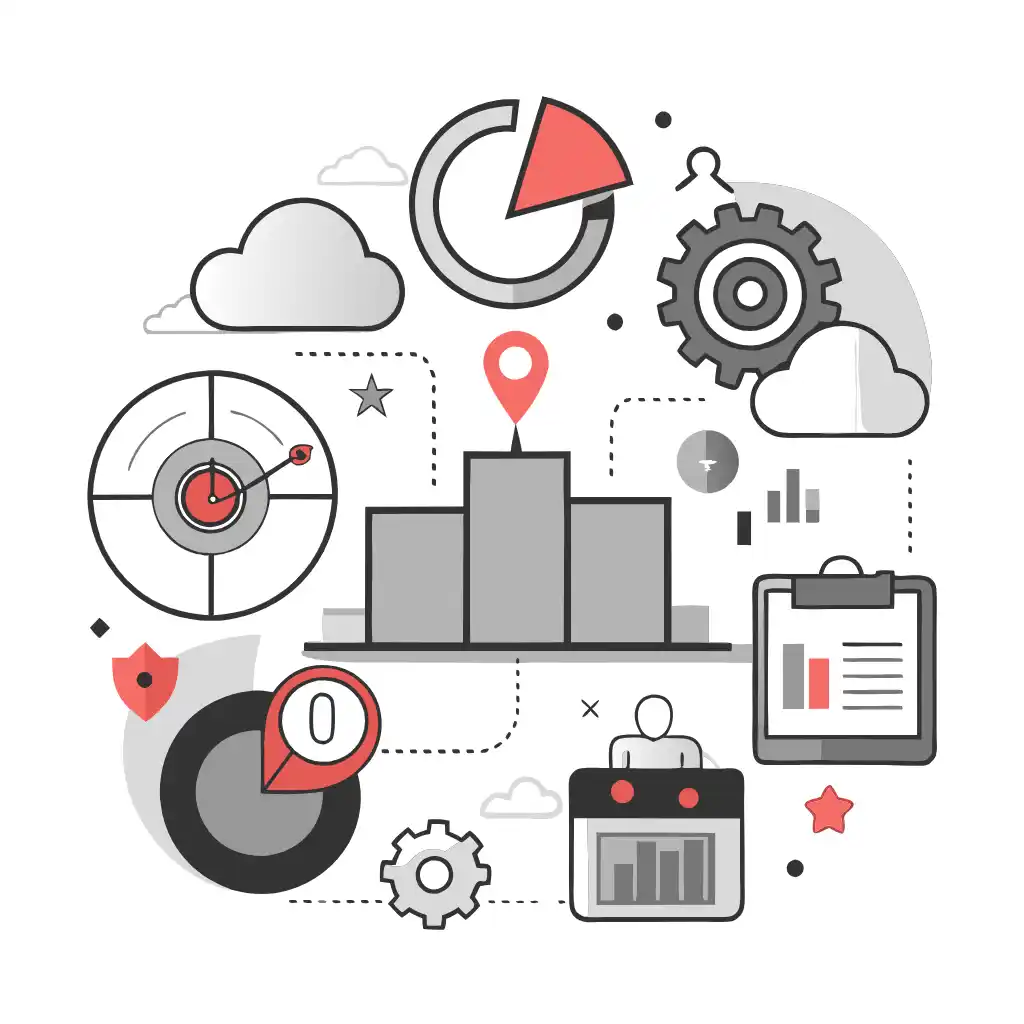Mastering Post-Editing ng Machine Translations na may ConveyThis
Pagbalanse ng Automation at Expertise sa Modern Translations
Kahanga-hanga ang pag-unlad ng awtomatikong pagsasalin. Ang mga maagang pag-ulit, kadalasang pinagmumulan ng mga awkward na output at nakakatawang viral moments, ay nagbigay daan sa isang mas pino, mapagkakatiwalaang sistema. Sa patuloy na pagdagsa ng data upang pag-aralan at matutunan, ang mga digital translator na ito ay lubos na pinahusay ang kanilang mga kakayahan, kahit na pinapagana ang epektibong multi-language na mga pagsasalin ng website nang walang makabuluhang pinansiyal na paggasta. Gayunpaman, maaari ba nitong palitan ang pagsasalin ng tao?
Ang nuanced na kalidad na inaalok ng mga taong tagapagsalin ay higit pa rin sa mga katapat nito sa makina. Ang katutubong katatasan, pang-unawa sa kultura, at mga linguistic na subtleties na nakuha mula sa isang buhay na pagsasawsaw sa wika ay mga lugar kung saan ang automation ay hindi pa epektibong nakikipagkumpitensya. Ito ang dahilan kung bakit ang proseso ng pag-post-edit ng mga awtomatikong pagsasalin—pagsasama ng digital na kahusayan sa kadalubhasaan ng tao—ay isang mahalagang hakbang sa pagtiyak ng pinakamainam na kalidad ng pagsasalin. Tinitiyak ng hybrid na pamamaraang ito na ang mga output ng makina ay pinakintab at tumpak, na naglalaman ng pinakamahusay na mga aspeto ng parehong pananaw ng tao at automated na bilis.


Pagbalanse ng Automation at Expertise sa Modern Translations
Sa larangan ng pagsasalin ng wika, ang pagsasama sa pagitan ng bilis ng teknolohiya at ang husay sa wika ng tao ay nagbunga ng isang diskarte na kilala bilang post-editing automated translations (PEAT). Pinagsasama-sama ng paraang ito ang kahusayan ng mga neural automated translations (NAT) at ang linguistic na kahusayan ng isang dalubhasa sa katutubong wika upang i-fine-tune ang mga pagsasalin na ginawa ng makina, na tinitiyak ang pinakamataas na antas ng katumpakan at pagiging tunay.
Ang salaysay ng mga automated na pagsasalin ay makabuluhang muling naisulat sa kagandahang-loob ng napakalaking hakbang sa artificial intelligence. Gayunpaman, sa kabila ng mga paglukso nito, ang teknolohiya ay nananatiling madaling kapitan sa paminsan-minsang mga maling hakbang, lalo na kapag nakikitungo sa mga nuanced na elemento ng linguistic tulad ng mga idiomatic na expression. Dito, ang post-editing ay nagsisilbing mahalagang tulay, na nag-o-optimize sa isinalin na nilalaman upang mapanatili ang kaluluwa nito at kaugnayan sa konteksto sa mga target na wika.
Ang paglalahad ng paglalakbay ng PEAT sa proseso ng pagsasalin ay nagpapakita ng isang nakakaintriga na itineraryo. Kasunod ng unang paglalayag, kung saan ang isang aparatong pinapagana ng AI ay nagsasagawa ng gawain ng pagsasalin ng nilalaman ng iyong website, ang baton ay ibibigay sa mga post-editor. Gamit ang linguistic proficiency, masinsinan nilang sinusuri ang isinalin na output, na gumagawa ng mga kinakailangang pagwawasto at pagbabago upang matiyak na ang tunay na diwa ng wika, ang mga banayad na nuances, boses, at tono nito ay pinaninindigan.
Ang pagsisimula sa PEAT expedition ay nai-render na walang putol sa isang nakalaang dashboard ng pamamahala ng pagsasalin. Nagbibigay ito ng dalawang mahusay na paraan para sa pagsasagawa ng mga pag-edit — sa pamamagitan ng Listahan ng Mga Pagsasalin o Visual Editor. Habang ang una ay nag-aalok ng isang sistematikong tala para sa pagsubaybay sa mga pagbabago, ang huli ay nagbibigay ng isang live na preview ng iyong website, na nagpapagana ng mga direktang on-site na pagbabago. Upang matugunan ang iba't ibang pangangailangan, ang dashboard ay nagbibigay pa nga ng kaginhawahan sa pag-order ng mga propesyonal na pagsasalin, sa gayon ay tinitiyak na ang iyong nilalaman ay nananatiling naka-sync sa iyong magkakaibang pandaigdigang madla.
The Unseen Edge: Mastering the Art of Post-Editing in Machine Translations
Ang unang hakbang sa paglalakbay sa pagsasalin ay gumagamit ng mga tool tulad ng Google Translate o DeepL, na agad na naghahatid ng mga raw machine translation (MT). Ang instant na diskarte na ito ay may kakayahan para sa mahusay na paghawak ng mataas na volume na nilalaman na nangangailangan ng hindi gaanong istilo, tulad ng mga teknikal na manual o mabilis na pagsusuri ng salita. Madali ding makita kung paano nakakaapekto ang isinalin na nilalaman sa layout ng iyong site dahil sa pagpapalawak o pag-urong ng text.
Gayunpaman, kapag ang iyong nilalaman ay sinadya upang makaimpluwensya, tulad ng sa iyong website o mga materyal na pang-promosyon, ang isang karagdagang layer ng buli ay nagiging mahalaga. Ipasok ang larangan ng post-editing machine translation (PEMT).
Bakit kailangang-kailangan ang PEMT? Mayroong dalawang bersyon ng PEMT: komprehensibo at magaan. Ang Comprehensive PEMT ay isang kumpletong pagsusuri upang mapanatili ang pare-pareho ng iyong boses, na nangangailangan ng mas maraming oras ngunit nagpapatunay na kapaki-pakinabang para sa mataas na trapiko na nilalaman. Sa kabaligtaran, mabilis na tinutukoy ng light PEMT ang mga maliliwanag na pagkakamali tulad ng mga maling spelling, hindi naaangkop na paggamit ng salita, o nawawalang bantas. Ito ay isang mas mabilis na proseso ngunit hindi gaanong masinsinan kaysa sa komprehensibong katapat nito.
Bakit mahalaga ang PEMT? Narito kung bakit:
Pagtitipid ng Mapagkukunan: Pinipino ng PEMT ang mga resulta ng MT nang walang mabigat na pamumuhunan ng oras o pera. Nangangahulugan ang pinahusay na kalidad ng mga tool sa MT na maaaring hindi mo kailangan ng malawak na pag-edit, na ginagawang isang abot-kayang opsyon ang PEMT, lalo na kapag mayroon kang mga in-house na linguist o gumagamit ng mga sistema ng pamamahala ng pagsasalin na nag-aalok ng mga serbisyo pagkatapos ng pag-edit.
Kahusayan: Ang malalaking gawain sa pagsasalin ay napapamahalaan sa PEMT. Ang mga tool ng MT ay agad na nag-aayos ng mga halatang error, na nag-iiwan lamang ng kaunting manu-manong interbensyon na kailangan para sa pagpino ng output. Ang mga modernong hakbang sa NMT ay ginagawang mas maayos ang proseso ng pagsasalin sa pamamagitan ng paghawak sa mga pangunahing gawain.
Pinahusay na Output: Agad na tinataas ng PEMT ang kalidad ng target na text, na ginagawa itong handa sa consumer. Ito ay nagpapahiwatig sa mga customer na ang pag-iisip at pagsisikap ay namuhunan sa isinalin na bersyon ng iyong website, na nakikilala ito mula sa puro machine-generated na pagsasalin. Ginagawa nitong instrumento ang PEMT sa epektibong pagkonekta sa iyong audience.

Hybrid Translation Approach: Ang Kapangyarihan ng Pagsasama-sama ng Bilis ng AI sa Dalubhasa ng Tao
Hindi maikakaila ang kalakasan at kahusayan ng isang katutubong tagapagsalita sa pagsasalin ng wika. Sila ay walang kahirap-hirap na nag-navigate sa masalimuot na mga layer ng wika, na nauunawaan ang mga maselan na lilim, pagkakaiba, at mga kakaibang maaaring hindi maunawaan ng isang makina. Gayunpaman, ang hindi nagkakamali na kalidad na inihatid ng mga tao ay may isang presyo, kapwa sa oras at pera. Ang proseso ay maaaring ilabas, na umaabot sa mga buwan batay sa dami ng tekstong naghihintay ng pagsasalin.
Dito lumalabas ang post-editing ng mga machine translation bilang isang matatag na solusyon, na nakakakuha ng perpektong balanse. Pinagsasama ng diskarteng ito ang bilis at pagiging produktibo ng mga awtomatikong pagsasalin sa linguistic na kahusayan ng isang katutubong nagsasalita, na nagreresulta sa mga pagsasalin na may mataas na kalidad. Ang diskarte na ito ay hindi nangangailangan ng pagtigil sa iyong mga pagsusumikap sa loob ng mahabang panahon na naghihintay ng maraming pagsasalin.
Gamit ang makabagong pamamaraang ito, maaari mong mabilis na magpatuloy sa iyong mga plano habang tinitiyak na ang nilalaman na iyong ihaharap sa iyong madla ay naayos ng matalinong mata ng isang eksperto. Isang espadang may dalawang talim, tinitiyak ng hybrid na diskarte sa pagsasaling ito na hindi ka ikokompromiso sa bilis o kalidad, na nagbibigay ng pinakahuling solusyon para sa iyong mga pangangailangan sa maraming wika.
Paggamit ng Mga Automated Language Translation: Isang Comprehensive Strategy
Ang pag-optimize ng Machine-Assisted Translation Post-Editing (MATPE) ay nangangailangan ng paggamit ng ilang partikular na diskarte.
Tiyakin na ang unang pagsasalin ay may mataas na kalidad. Ang iba't ibang mga tool ay may iba't ibang kahusayan, na may mga partikular na kumbinasyon ng wika na gumaganap nang mas mahusay sa ilang mga tool. Bilang halimbawa, mas mataas ang ranggo ng English-Spanish transmutations sa DeepL, habang ang mga pagpapares ng German-English ay mahusay sa Google Translate. Pinapasimple ng tumpak na paunang pagsasalin ang kasunod na proseso ng pagpipino.
Pumili ng isang awtomatikong tool sa pagsasalin ng website. Ang pagsasama ng isang translation engine tulad ng Google Translate API ay isang opsyon, kahit na ang software sa pamamahala ng pagsasalin ay maaaring mag-streamline ng mga gawain nang malaki. Ang isang mahusay na napiling software ay maaaring awtomatikong italaga ang pinakamahusay na gumaganap na translation engine sa naaangkop na kumbinasyon ng wika.
Gumamit ng mga diksyunaryo ng pagsasalin upang pasimplehin ang mga gawain. Iniimbak ng mga reference na mapagkukunang ito ang iyong mga manu-manong pagbabago sa pagsasalin at ilapat ang mga ito sa lahat ng iyong proyekto.
Kilalanin ang mga karaniwang error sa pagsasalin ng makina. Ang mga tool sa pagsasalin na hinimok ng AI ay magbibigay ng mga tumpak na pagsasalin, ngunit ang pagkakaroon ng kamalayan sa mga karaniwang oversight sa raw na resulta ay napakahalaga. Maaaring kabilang sa mga ito ang mga artikulong mali sa lugar o wala, maling pagsasalin ng mga termino, idinagdag o tinanggal na mga salita, maling bantas, kasarian, capitalization, pag-format, o pagkakasunud-sunod ng salita, at hindi na-translate na mga termino sa orihinal na wika.
Magtatag ng pare-parehong boses ng tatak. Kung mayroon kang panloob na koponan o gumagamit ng mga serbisyo sa pagsasalin, isentro ang iyong mga alituntuning pang-editoryal para sa madaling sanggunian. Ang pagtukoy sa istilo ng iyong brand, gaya ng gusto mong tono, bilang ng pangungusap sa bawat talata, kung ang mga numero ay isinulat bilang mga numeral, at paninindigan sa Oxford comma, ay maaaring gawing mas nakakatakot ang proseso.
Bagama't mahalaga na maghangad ng katumpakan ng pagsasalin, huwag mawala sa pagiging perpekto. Tumutok sa pagpapanatili ng kahulugan ng orihinal na teksto at pag-alis ng mga hindi naaangkop na pagsasalin. Tandaan, ang pagbabawas ng mga manu-manong gawain ay susi!
Mag-ingat sa mga idyoma at parirala na maaaring mukhang kakaiba o ganap na mali ang pagsasalin sa ibang wika.
Panghuli, magsagawa ng panghuling pagsusuri bago ilathala. Ang iyong sistema ng pamamahala ng pagsasalin ay madalas na makakita ng mga malilinaw na error, ngunit ang isang pangwakas na pag-sweep ay maaaring mahuli ang anumang hindi napapansin na mga typo o maling spelling.
Ang pagsasalin, higit pa sa pag-alam sa mga wika, ay isang masalimuot na proseso.
Sa pamamagitan ng pagsunod sa aming mga tip at paggamit ng ConveyThis , ang iyong mga isinalin na pahina ay makikinig sa iyong madla, na nararamdamang katutubong sa target na wika.
Bagama't nangangailangan ito ng pagsisikap, ang resulta ay kapakipakinabang. Kung nagsasalin ka ng website, ang ConveyThis ay makakapagtipid sa iyo ng mga oras gamit ang automated machine translation.
Subukan ang ConveyThis nang libre sa loob ng 7 araw!